Leonardo on Painting: An Anthology of Writings by Leonardo da Vinci with a Selection of Documents Relating to his Career Out of the Studio The unself-conscious and affectionate contact between men that is so startling and so characteristic of Tom Bianchi's photogrpahs speaks to a reality rarely reported in art. His work brings men out of the studio, out of the isolation of the classic male nude, and into the sunlight, into the magic circle of friendship, joy, and life. 88 duotone photos.Remedios Varo: Science Fictions Rubens and Brueghel: A Working Friendship (Getty Trust Publications: J. Paul Getty Museum) 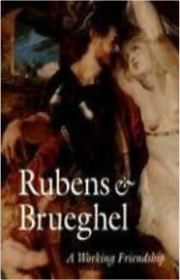
Published to coincide with an exhibition at the Getty Museum to be held July 5 to September 24, 2006, the catalogue features twenty-six color plates of such Rubens/Brueghel paintings as The Return from War, The Feast of Achelous, and Madonna and Child in a Garland of Flowers, along with Rubens and Brueghel's collaborations with important contemporaries such as Frans Snyders and Hendrick van Balen. This is the first such publication to fully address and reproduce these works in depth.Empty Places: A Performance Laurie AndersonLaurie Anderson: Dal Vivo Laurie Anderson, Germano CelantArtwork by Laurie Anderson. Edited by Germano Celant.Laurie Anderson: Night Life Laurie Anderson"For the last year I’ve been on the road with a solo performance. Every night another theater, another hotel room. Gradually my dreams became wild, vivid, more and more relentless. Headless singing squirrels, vast empty spaces, bizarre clatterings and invasions. My own dark and private theater was slowly taking over. I began to draw these dreams literally out of self-defense. I kept the computer drawing tablet next to the bed and tried to capture them in their most raw state. After many months of drawing my dreams I was drawn into the odd language and logic of the images. Often I drew my own head in the foreground. What did that mean? Who’s watching who? Often the dreams were alternate versions of the day’s events. Sometimes they were heavily charged atmospheres, sensations, emotions. Depictions of bewilderment, ecstasy, weightlessness, abandonment, freedom." Night Life is Laurie Anderson’s diary of a year of dreams. Its pages re-create each night’s mental show as a work of art, employing Anderson’s skill in theater, lyrics and narrative to investigate the workings of her mind in the languages of dreams, drawings and text.Laurie Anderson: Nothing in My Pockets Laurie AndersonLaurie Anderson's Nothing in My Pockets is a two-part sound diary, originally broadcast on French radio, kept between July 4 and October 4, 2003. This volume contains the radio piece on two CDs, as well as a selection of original visual documents—offering an intimate glimpse into the personal universe of this seminal American artist.Stories from the Nerve Bible: A Twenty-Year Retrospective Laurie AndersonTalk Normal Anderson, LaurieKlee and Kandinsky: Neighbors, Friends, Rivals Vivian Endicott Barnett, Michael Baumgartner, Annegret Hoberg, Christine HopfengartPaul Klee and Wassily Kandinsky, two of the most influential figures in the modernist movement, are the subject of this illuminating book that opens a dialogue between their work, friendship, and influence on each other. Klee and Kandinsky were towering figures of the modernist movement and were close, both as friends and artists. For a time
they lived next door to one another, and exchanged their artistic
ideas on a daily basis. This unique book explores their 30-year
relationship, from the time of the Blue Rider group around 1912,
to the Bauhaus years in Weimar and Dessau until the late 1930s.
With the culture of the Weimar Republic as a backdrop, this book
traces the eventful history of an artistic friendship. Kandinsky’s
idealism is juxtaposed with Klee’s irony, and we learn that their
relationship was characterized in equal measure by friendship
and competitiveness, mutual influence and the need to establish
distance. The focus is on the artistic dialogue they enacted
through their art. They were joined by an aspiration to spiritualize
art and explore its intrinsic laws. At the same time, Kandinsky’s
commitment to abstraction contrasted strongly with Klee’s
allegiance to natural models.Symbols and Allegories in Art Matilde BattistiniFrom antiquity, when the gods and goddesses were commonly featured in works of art, through to the twentieth century, when Surrealists drew on archetypes from the unconscious, artists have embedded symbols in their works. As with previous volumes in the Guide to Imagery series, the goal of this book is to provide contemporary readers and museum visitors with the tools to read the hidden meanings in works of art. This latest volume is divided thematically into four sections featuring symbols related to time, man, space (earth and sky), and allegories or moral lessons. Readers will learn, for instance, that night, the primordial mother of the cosmos, was often portrayed in ancient art as a woman wrapped in a black veil, whereas day or noon was often represented in Renaissance art as a strong, virile man evoking the full manifestation of the sun's energy. Each entry in the book contains a main reference image in which details of the symbol or allegory being analyzed are called out for discussion. In the margin, for quick access by the reader, is a summary of the essential characteristics of the symbol in question, the derivation of its name, and the religious tradition from which it springs.Gustav Klimt: The Magic of Line Marian Bisanz-PrakkenThe phenomenal draftsman Gustav Klimt occupies a unique place in modern art. His extant œuvre comprises some 250 paintings and more than 4,000 works on paper. The study of the human figure—above all female—lies at the heart of the artist’s activity as a draftsman, which he practiced assiduously. Through his study of the poses and gestures of his models, Klimt repeatedly examined the essence of particular psychological and existential states of being. In his constant quest for the ideal solution, Klimt often went beyond the preparation of his paintings, which, particularly after 1900, were dominated by the themes of Eros, Love, Life, and Death. His art cannot be understood without carefully considering the drawings, which are characterized by an unsurpassed mastery of line, in all the phases of his artistic development—from Historicism, through Stilkunst around 1900, the Golden Period, and up to his freer late work. This lavishly illustrated publication accompanies the exhibition organized by the Albertina Museum in Vienna (March 13 to June 10, 2012) and the J. Paul Getty Museum in Los Angeles (July 3 to September 23, 2012) to mark the 150th anniversary of Gustav Klimt’s birth. In both venues, the emphasis will be placed on showing not only the variety of his draftsmanship, but also the centrality of drawing to Klimt’s artistic enterprise. Most of the works on display will come from the Albertina’s outstanding collection, one of the most extensive and representative groups of Klimt drawings in the world, complemented by select Austrian and international loans.Apple Design Friedrich von Borries, Ina Grätz, Sabine SchulzeEasily one of the most influential and popular design companies of our era, Apple has made electronics design history with its innovative iMacs, iPhones, iPods and iPads. Apple Design features over 200 examples of outstanding Apple designs by Jonathan Ive (born 1967), the company's Senior Vice President of Industrial Design, who since 1997 has been responsible for the design of all of Apple's products. Over the past decade, Ive and his team of designers have created elegant and user-friendly designs that have significantly advanced the brand's cult status as it enters the new millennium. Examining each of these in detail, and with full color throughout, Apple Design compares various approaches to industrial design alongside Apple's, and casts light on numerous aspects of its history, deepening our understanding of contemporary industrial design. Following an analysis of the forms and functions of the featured Apple products, the book provides an explanation of the innovative production methods and materials applied. Last but not least, it examines Apple design's overt references to the simplified forms of the products manufactured by the great German brand Braun, and enumerates the famous "Ten Rules for Good Design" promulgated by the company's chief designer, Dieter Rams, showing in each case how Apple has deployed and fulfilled them.Kazimir Malevich, 1878-1935 John E. Bowlt231pp, with 125 full colour and 130 black-and-white illustrationsDavid Byrne: E.E.E.I. (Envisioning Emotional Epistemological Information) David ByrneYour Action World: Winners Are Losers with a New Attitude David ByrneIf Not, Winter: Fragments of Sappho Sappho/Anne CarsonBy combining the ancient mysteries of Sappho with the contemporary wizardry of one of our most fearless and original poets, If Not, Winter provides a tantalizing window onto the genius of a woman whose lyric power spans millennia.
Of the nine books of lyrics the ancient Greek poet Sappho is said to have composed, only one poem has survived complete. The rest are fragments. In this miraculous new translation, acclaimed poet and classicist Anne Carson presents all of Sappho’s fragments, in Greek and in English, as if on the ragged scraps of papyrus that preserve them, inviting a thrill of discovery and conjecture that can be described only as electric—or, to use Sappho’s words, as “thin fire . . . racing under skin.”
"Sappho's verse has been elevated to new heights in [this] gorgeous translation." —The New York Times
"Carson is in many ways [Sappho's] ideal translator....Her command of language is hones to a perfect edge and her approach to the text, respectful yet imaginative, results in verse that lets Sappho shine forth." —Los Angeles TimesTreasures of the British Museum Marjorie CaygillUnderbelly: Additional Observations on the Beauty/Ugliness of Mostly Pillowy Girls Dave CooperDalí: Les Dîners de Gala Salvador DalíLengthening Shadows Before Nightfall John DugdaleHistory of Beauty Umberto EcoOn Ugliness Umberto EcoIn the mold of his acclaimed History of Beauty, renowned cultural critic Umberto Eco’s On Ugliness is an exploration of the monstrous and the repellant in visual culture and the arts. What is the voyeuristic impulse behind our attraction to the gruesome and the horrible? Where does the magnetic appeal of the sordid and the scandalous come from? Is ugliness also in the eye of the beholder? Eco’s encyclopedic knowledge and captivating storytelling skills combine in this ingenious study of the Ugly, revealing that what we often shield ourselves from and shun in everyday life is what we’re most attracted to subliminally. Topics range from Milton’s Satan to Goethe’s Mephistopheles; from witchcraft and medieval torture tactics to martyrs, hermits, and penitents; from lunar births and disemboweled corpses to mythic monsters and sideshow freaks; and from Decadentism and picturesque ugliness to the tacky, kitsch, and camp, and the aesthetics of excess and vice. With abundant examples of painting and sculpture ranging from ancient Greek amphorae to Bosch, Brueghel, and Goya among others, and with quotations from the most celebrated writers and philosophers of each age, this provocative discussion explores in-depth the concepts of evil, depravity, and darkness in art and literature.Vikings : The North Atlantic Saga William W. FitzhughDavid Lynch: Lithos Patrice Forest, Dominique Paini, David LynchThe workshop of Item Editions is sequestered in a back courtyard off the Rue du Montparnasse in Paris, where artists from all around the world have lithographs made on Solnhofener stones. Here, with the help of the historic presses that have printed masterworks by such artists as Picasso, Matisse and Miro, a durable artistic continues today. Filmmaker, photographer, painter and printmaker David Lynch (born 1946) was captivated by this place and its history, when he first chanced across it in 2007: "I fell in love," he declared. Since his earliest experiments with zinc plates and prints in black and red, Lynch has continued to labor away at Item Editions, recently producing large black-and-white lithographs by drawing directly onto the stone (rather than using the medium to create multiples of pre-existing drawings), experimenting with textures to draw figurative imagery out of abstract patterns, and adding captions to further elucidate their themes. The content of these lithographs clusters around themes familiar to Lynch fans: love, eroticism, dreams and death. David Lynch: Lithos collects all of Lynch's work in this genre. A conversation between Dominique Paini, former director of the French Cinematheque and Centre Georges Pompidou in Paris, and the artist, provides further insight into Lynch's process.Andy Goldsworthy: A Collaboration with Nature Andy GoldsworthyMariposas Nocturnas: Moths of Central and South America, A Study in Beauty and Diversity Emmet GowinA stunning portrait of the nocturnal moths of Central and South America by famed American photographer Emmet Gowin
American photographer Emmet Gowin (b. 1941) is best known for his portraits of his wife, Edith, and their family, as well as for his images documenting the impact of human activity upon landscapes around the world. For the past fifteen years, he has been engaged in an equally profound project on a different scale, capturing the exquisite beauty of more than one thousand species of nocturnal moths in Bolivia, Brazil, Ecuador, French Guiana, and Panama.
These stunning color portraits present the insects―many of which may never have been photographed as living specimens before, and some of which may not be seen again―arrayed in typologies of twenty-five per sheet. The moths are photographed alive, in natural positions and postures, and set against a variety of backgrounds taken from the natural world and images from art history.
Throughout Gowin’s distinguished career, his work has addressed urgent concerns. The arresting images of Mariposas Nocturnas extend this reach, as Gowin fosters awareness for a part of nature that is generally left unobserved and calls for a greater awareness of the biodiversity and value of the tropics as a universally shared natural treasure. An essay by Gowin provides a fascinating personal history of his work with biologists and introduces both the photographic and philosophical processes behind this extraordinary project.
Essential reading for audiences both in photography and natural history, this lavishly illustrated volume reminds readers that, as Terry Tempest Williams writes in her foreword, “The world is saturated with loveliness, inhabited by others far more adept at living with uncertainty than we are.”Masterpieces In Detail Rose-Marie Hagen, Ranier HagenFrom ancient Egyptian papyrus scrolls to 20th century works: painting's hidden secrets revealed
Is the bride pregnant?
What are clogs doing on a marriage picture?
Why is just one candle burning in the chandelier?
And what does the mirror in the background reveal?
Rose-Marie and Rainer Hagen provide answers to these and other questions about world-famous works of art. Guiding our eye to revealing details, they also shed fascinating light on fashions and lifestyles, loves and intrigues, politics and people, and transform our encounter with art into exciting adventure.
"Amazingly informative and readable... An important addition to art history literature."
- The Sanford Herald, United StatesWhat Great Paintings Say, Vol. 2 (What Great Paintings Say) Rose-Marie Hagen Rainer HagenDictionary of Subjects and Symbols in Art James HallThis second edition of noted art historian James Hall's classic dictionary of subjects and themes in Western art is a definitive work by which others will be compared. The book is also an indispensable tool for students and art appreciators who are looking to enhance the understanding and enjoyment of their viewing.
Here in a single succinct volume are combined religious, classical, and historical themes, the figures of moral allegory, and characters from romantic poetry, all of which have been established through paintings and sculpture in Western art before and after the Renaissance. More than just a dictionary, this text places these subjects in their narrative, historical, or mythological context and uses extensive cross-referencing to enhance and clarify their meanings. This thoroughly redesigned second edition includes a new insert of sixteen images, hand-selected by the author to depict key themes in the book.History of Art H. W. Janson, H.W. Janson, Anthony F. JansonThe most thorough, cogent, and lavishly illustrated survey of art in the Western tradition, Janson's History of Art has now been completely redesigned and updated to make it the ultimate visually and intellectually exciting resource for today. Timelines; glossary; bibliography; index. 1,266 illustrations, more than 775 in full color.Drawing Surrealism Leslie JonesDrawing, often considered a minor art, was central to Surrealism from the very beginning. Automatic drawing, exquisite cadavers, and frottage are just a few of the techniques invented by Surrealists as means to tap into the subconscious realm. While previous books have examined the connection between drawings and Surrealist paintings, Drawing Surrealism is the first to recognize the medium as a fundamental form of Surrealist expression, and to explore its impact on other media as well. Surrealist collage, photography, and even paintings are presented in the context of drawing as a metaphor for innovation and experimentation. It is also the first book to encompass a wide array of artists on a global scale—from the great figures in Surrealist history to lesser-known Surrealists from Japan, Central Europe, and the Americas, where the movement had a profound and lasting effect. In addition to brilliant reproductions of drawings and other works by more than 100 artists, this volume also includes a substantial historical essay by the exhibition's curator as well as informative essays by leading scholars. This groundbreaking book offers a deep understanding of the techniques and concerns that made Surrealism such an intimate perceptual revolution.ART of the 20th Century Klaus Honnef Schneckenburger, Fricke, RuhrbergAphrodite and the Gods of Love Christine Kondoleon, Rachel Kousser, Diana McDonald, Vinciane Pirenne-DelforgeArguably the most compelling of the ancient divinities, Aphrodite also remains the most alluring. Worshiped and celebrated, she has been depicted in ways both ethereal and crude: it was her image that inspired Praxiteles to introduce the female nude into Western art. As an icon of female sexuality, Aphrodite's effigy has graced everything from ancient temples to modern cosmetics labels. The ancients, knowing that love conquers all, considered her mightier than Hercules. Aphrodite and the Gods of Love presents, for the first time, a comprehensive and scholarly appreciation of the love deity. Via more than 100 marble sculptures, painted vases, precious metals, mosaics and gems—as well as contemporary depictions by artists such as Jim Dine—the book traces the early worship of Aphrodite as a fertility figure in the Near East, her emergence as love goddess for the Greeks and her eventual adaptation by Rome as Venus. It highlights the myths surrounding this icon of sensuality, notably regarding seduction and marriage, and presents the circle of her lovers and children, such as Eros, Hermaphrodite and Priapos, also tracing how the cult of Aphrodite continues into the present day. A feast for the eye and a celebration of desire, Aphrodite and the Gods of Love is sure to prove the year's sexiest catalogue.Pasta by Design George L. LegendreAn in-depth investigation of a beloved food, a celebration of the complexity of simple pleasures, and a delight for everyone who eats pasta.Everyone loves pasta, but despite myriad cookbooks no one has ever seen the world’s favorite food presented like this. Created by a team of obsessive designers, this unique book reveals the hidden mathematical beauty that cooks across the globe have taken for granted since Marco Polo.
Pasta’s wonderful, sometimes whimsical, geometrical shapes and surfaces are designed to hold certain sauces or accompaniments, to be beautiful yet functional. Here are over ninety forms of pasta, each shown through especially commissioned photographs, mathematical formulae that accurately describe each shape, and drawings that reveal the hidden genius of our everyday food. Brief texts describe the special attributes of each form of pasta, along with advice on specific uses in cooking. 90 full-color photographs and 200 black-and-white illustrationsLorenzo Lotto: Rediscovered Master of the Renaissance David Alan Brown Peter Humfrey Mauro LuccoThe Guide of the Perplexed, Vol. 1 Moses Maimonides, Shlomo Pines, Leo StraussThis monument of rabbinical exegesis written at the end of the twelfth century has exerted an immense and continuing influence upon Jewish thought. Its aim is to liberate people from the tormenting perplexities arising from their understanding of the Bible according only to its literal meaning. This edition contains extensive introductions by Shlomo Pines and Leo Strauss, a leading authority on Maimonides.Dali: Colour Library Christopher MastersSalvador Dali (1904-89) was one of the most controversial and paradoxical artists of the twentieth century. A painter of considerable virtuosity, he used a traditional illusionistic style to create disturbing images filled with references to violence, death, cannibalism and bizarre sexual practices, from the extraordinary limp watches in The Persistence of Memory to the gruesome monster in Soft Construction with Boiled Beans: Premonition of Civil War and the fetishistic lobster in the famous Lobster Telephone. Born in Figueras, Spain, Dali was initially influenced by Impressionism and Cubism, but subsquently became involved with the Surrealists, the most revolutionary artists of the time. They regarded his paintings as revealing the normally hidden world of the unconscious. Indeed the Surrealists' leader, Andre Breton, remarked: "It is perhaps with Dali that for the first time the windows of the mind are opened fully wide". However, Breton later expelled him from the group for this right-wing sympathies and derided his commercial success in the United States, calling him 'Avida Dollars'. Dali's response was equally curt: " The difference between me and the Surrealists is that I am a Surrealist". Not restricting his interests to painting, Dali wrote three autobiographies, designed sets and costumes for a play by his friend Federico Garcia Lorca and collaborated with Luis Bunuel in the film Un Chien andalou, a medium which proved particularly apt for his provocative imagery.Michelangelo Life Drawings MichelangeloThroughout his long life, Michelangelo Buonarroti (1475–1564) never ceased to practice drawing with pen, pencil, or chalk. In the 60 years of creative activity encompassed by this volume, the artist produced scores of sketches, drawings, and studies — nudes, heads, figure studies, Madonnas, anatomical drawings, studies of children and animals, mythical representations, and religious works. This book reproduces 46 of his finest drawings, embodying most of his artistic themes and techniques, and executed in his characteristic media of pen and ink, and red and black chalk. The extraordinary strength, grace, and clarity of his renderings are beautifully illustrated on every page.
The compositions, carefully reproduced on fine-quality paper, range from youthful studies modeled after ancient sculpture and early Renaissance frescoes to the otherworldly religious creations of his old age. Many are preliminary drawings executed in connection with some of his most important commissions: the marble David of 1501–04; the famous cartoon of 1504 for the projected fresco in the Palazzo Vecchio, The Battle of Cascina; the paintings on the vaulted ceiling of the Sistine Chapel, executed 1508–12; and the imposing fresco of The Last Judgment in the same chapel, executed 1535–14; as well as several of the more highly finished allegorical presentation drawings of the early 1530s. In some cases, e.g. The Battle of Cascina, the drawings are all that remain of a lost masterpiece. All drawings are accompanied by brief descriptive captions including date, medium, size, and current location.The Work of Art: How Something Comes from Nothing Adam MossAlbertus Seba: Cabinet of Natural Curiosities Dr Irmgard / Willmann Msch, Prof Dr Rainer Willmann, Dr Irmgard Musch, Irmgard Musch, Rainer Willmann Dr.A most unusual collection of natural specimens
Albertus Seba's Cabinet of Curiosities is one of the 18th century's greatest natural history achievements and remains one of the most prized natural history books of all time. Though scientists of his era often collected natural specimens for research purposes, Amsterdam-based pharmacist Albertus Seba (1665-1736) was unrivaled in his passion. His amazing collection of animals, plants and insects from all around the world gained international fame during his lifetime. In 1731, after decades of collecting, Seba commissioned illustrations of every specimen and arranged the publication of a four-volume catalog–from strange and exotic plants to snakes, frogs, crocodiles, shellfish, corals, birds, and butterflies, as well as fantastic beasts, such as a hydra and a dragon.
Seba's scenic illustrations, often mixing plants and animals in a single plate, were unusual even for the time. The more peculiar creatures from the collection–some of them now extinct–were as curious in Seba's day as they are today.
Our superb reproduction is taken from a rare, hand-colored original. The introduction supplies background information about the fascinating tradition to which Seba's curiosities belonged.Jean-Michel Basquiat Eleanor NairneBlack: The History of a Color Michel PastoureauBlack—favorite color of priests and penitents, artists and ascetics, fashion designers and fascists—has always stood for powerfully opposed ideas: authority and humility, sin and holiness, rebellion and conformity, wealth and poverty, good and bad. In this beautiful and richly illustrated book, the acclaimed author of Blue now tells the fascinating social history of the color black in Europe.
In the beginning was black, Michel Pastoureau tells us. The archetypal color of darkness and death, black was associated in the early Christian period with hell and the devil but also with monastic virtue. In the medieval era, black became the habit of courtiers and a hallmark of royal luxury. Black took on new meanings for early modern Europeans as they began to print words and images in black and white, and to absorb Isaac Newton's announcement that black was no color after all. During the romantic period, black was melancholy's friend, while in the twentieth century black (and white) came to dominate art, print, photography, and film, and was finally restored to the status of a true color.
For Pastoureau, the history of any color must be a social history first because it is societies that give colors everything from their changing names to their changing meanings—and black is exemplary in this regard. In dyes, fabrics, and clothing, and in painting and other art works, black has always been a forceful—and ambivalent—shaper of social, symbolic, and ideological meaning in European societies.
With its striking design and compelling text, Black will delight anyone who is interested in the history of fashion, art, media, or design.Blue: The History of a Color Michel PastoureauA beautifully illustrated visual and cultural history of the color blue throughout the ages
Blue has had a long and topsy-turvy history in the Western world. The ancient Greeks scorned it as ugly and barbaric, but most Americans and Europeans now cite it as their favorite color. In this fascinating history, the renowned medievalist Michel Pastoureau traces the changing meanings of blue from its rare appearance in prehistoric art to its international ubiquity today.
Any history of color is, above all, a social history. Pastoureau investigates how the ever-changing role of blue in society has been reflected in manuscripts, stained glass, heraldry, clothing, paintings, and popular culture. Beginning with the almost total absence of blue from ancient Western art and language, the story moves to medieval Europe. As people began to associate blue with the Virgin Mary, the color became a powerful element in church decoration and symbolism. Blue gained new favor as a royal color in the twelfth century and became a formidable political and military force during the French Revolution. As blue triumphed in the modern era, new shades were created and blue became the color of romance and the blues. Finally, Pastoureau follows blue into contemporary times, when military clothing gave way to the everyday uniform of blue jeans and blue became the universal and unifying color of the Earth as seen from space.
Beautifully illustrated, Blue tells the intriguing story of our favorite color and the cultures that have hated it, loved it, and made it essential to some of our greatest works of art.Green: The History of a Color Michel PastoureauIn this beautiful and richly illustrated book, the acclaimed author of Blue and Black presents a fascinating and revealing history of the color green in European societies from prehistoric times to today. Examining the evolving place of green in art, clothes, literature, religion, science, and everyday life, Michel Pastoureau traces how culture has profoundly changed the perception and meaning of the color over millennia—and how we misread cultural, social, and art history when we assume that colors have always signified what they do today.
Filled with entertaining and enlightening anecdotes, Green shows that the color has been ambivalent: a symbol of life, luck, and hope, but also disorder, greed, poison, and the devil. Chemically unstable, green pigments were long difficult to produce and even harder to fix. Not surprisingly, the color has been associated with all that is changeable and fleeting: childhood, love, and money. Only in the Romantic period did green definitively become the color of nature.
Pastoureau also explains why the color was connected with the Roman emperor Nero, how it became the color of Islam, why Goethe believed it was the color of the middle class, why some nineteenth-century scholars speculated that the ancient Greeks couldn’t see green, and how the color was denigrated by Kandinsky and the Bauhaus.
More broadly, Green demonstrates that the history of the color is, to a large degree, one of dramatic reversal: long absent, ignored, or rejected, green today has become a ubiquitous and soothing presence as the symbol of environmental causes and the mission to save the planet.
With its striking design and compelling text, Green will delight anyone who is interested in history, culture, art, fashion, or media.Red: The History of a Color Michel PastoureauA beautifully illustrated visual and cultural history of the color red throughout the ages
The color red has represented many things, from the life force and the divine to love, lust, and anger. Up through the Middle Ages, red held a place of privilege in the Western world. For many cultures, red was not just one color of many but rather the only color worthy enough to be used for social purposes. In some languages, the word for red was the same as the word for color. The first color developed for painting and dying, red became associated in antiquity with war, wealth, and power. In the medieval period, red held both religious significance, as the color of the blood of Christ and the fires of Hell, and secular meaning, as a symbol of love, glory, and beauty. Yet during the Protestant Reformation, red began to decline in status. Viewed as indecent and immoral and linked to luxury and the excesses of the Catholic Church, red fell out of favor. After the French Revolution, red gained new respect as the color of progressive movements and radical left-wing politics.
In this beautifully illustrated book, Michel Pastoureau, the acclaimed author of Blue, Black, and Green, now masterfully navigates centuries of symbolism and complex meanings to present the fascinating and sometimes controversial history of the color red. Pastoureau illuminates red's evolution through a diverse selection of captivating images, including the cave paintings of Lascaux, the works of Renaissance masters, and the modern paintings and stained glass of Mark Rothko and Josef Albers.White: The History of a Color Michel PastoureauYellow: The History of a Color Michel Pastoureau30,000 Years of Art Editors of Phaidon30,000 YEARS OF ART: THE STORY OF HUMAN CREATIVITY ACROSS TIME AND SPACE is the follow-up to Phaidon's phenomenally successful THE ART BOOK. This is an accessible, fun and informative compendium of world art that offers a fresh perspective on the whole of art history, from 28,000 BC to the present day. It debunks art historical classifications and hierarchies by presenting 1,000 masterworks of art in simple chronological order, demonstrating what was being created all over the globe at the same time. Only here can you find the Venus de Milo next to a mural from the Mayan civilization, or Velazquez' Las Meninas next to a painting from the Chinese Ming Dynasty, an Indian jade wine cup, a ritual Nepalese plaque, a Korean portrait, and Vermeer's Milkmaid. Each work has been chosen for its unique place in the history of art, and as a representative example of the art of its culture. By juxtaposing works of art from different cultures throughout time, this is the first book to offer a balanced appraisal of world art history, revealing the huge diversity of and similarity between man's artistic achievements.
Each entry includes a full-page color image of the work and a concise descriptive text that sets the work in context, explaining its contribution to the development of art and the medium in which it was created. A comprehensive index, illustrated timelines, and a glossary of terms and movements make this book an invaluable reference tool and teaching resource.Alchemy & Mysticism: The Hermetic Museum (Klotz) Alexander RoobWhat Great Paintings Say, Vol 1 (Midi Series) Rose-Marie Hagen Rainer, Dr. HagenCaravaggio: The Complete Works Sebastian SchützeA Revolution in Painting
The mysterious genius who transformed European art
Caravaggio, or more accurately Michelangelo Merisi da Caravaggio (1571–1610), was always a name to be reckoned with. Notorious bad boy of Italian painting, the artist was at once celebrated and controversial: violent in temper, precise in technique, a creative master, and a man on the run. Today, he is considered one of the greatest influences in all art history.
This Bibliotheca Universalis edition offers a neat yet comprehensive Caravaggio catalogue raisonné. Each of his paintings is reproduced from recent top-quality photography, allowing for a vivid encounter with the artist’s ingenious repertoire of looks and gestures, as well as numerous detail shots of his boundary-breaking naturalism, whether a grubby foot or the soft folds of a sagging stomach. Five accompanying chapters trace the complete arc of Caravaggio’s career from his first public commissions in Rome through to his growing celebrity status, while the book’s detailed chronology traces his tempestuous personal life, in which drama loomed as prominently as in his chiaroscuro canvases.
About the series:
Bibliotheca Universalis— Compact cultural companions celebrating the eclectic TASCHEN universe at an unbeatable, democratic price!
Since we started our work as cultural archaeologists in 1980, the name TASCHEN has become synonymous with accessible, open-minded publishing. Bibliotheca Universalis brings together nearly 100 of our all-time favorite titles in a neat new format so you can curate your own affordable library of art, anthropology, and aphrodisia.
Bookworm’s delight — never bore, always excite!Ascending Chaos: The Art of Masami Teraoka 1966-2006 Masami TeraokaPublished to coincide with a series of major exhibitions extending beyond 2007, Ascending Chaos is the first major retrospective of Japanese-American artist Masami Teraoka's prolific and acclaimed work thus far. In Teraoka's paintingswhich have evolved from his wry mimicry of Japanese woodblock prints to much larger and complex canvasses reminiscent of Bosch and Brueghelthe political and the personal collide in a riot of sexually frank tableaux. Populated by geishas and goddesses, priests, and politicians, and prominent contemporary figures, these paintings are the spectacular next phase of a wildly inventive career. With essays by renowned art critics who discuss how Teraoka's work inventively marries east and west, sex and religion, Ascending Chaos is a critical overview of this cultural trickster.Paintings By Masami Teraoka Masami TeraokaIntegrating traditional imagery and subject matter with pop art, Teraoka casts contemporary issues—from AIDS to computers, environmental degradation, and drive-by shootings—in historical guise. Humor and satire combine with a vibrant iconography drawn from Japanese and Western sources—catfish, trickster, fox, ghost, snake, ninja, samurai, geisha, Adam and Eve, punk rockers, and television. Teraoka's work moves from the indulgent pleasures of ukiyo, or the "floating world" of ancient theater and pleasure houses, to a chastened consciousness of death and evil with a majestic virtuosity unique in contemporary art.Picasso Midi (Jumbo) C. P. Warncke Ingo F. Walther Carsten P. WarnckeAn account of Picasso's work, featuring colour illustrations throughout. |
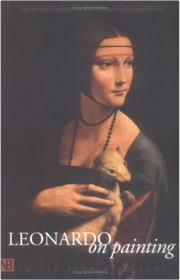
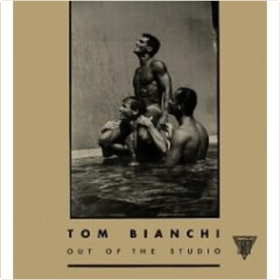
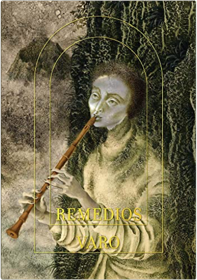

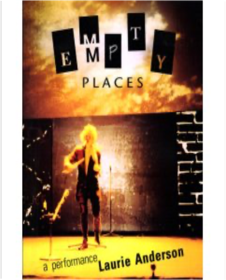
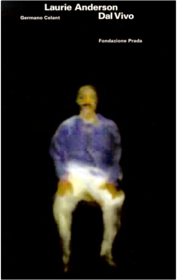
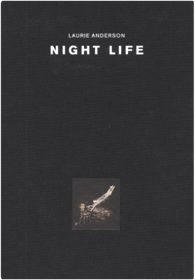
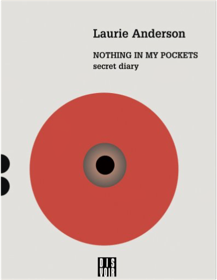
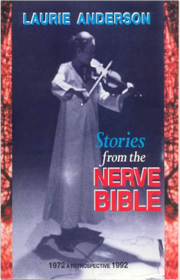
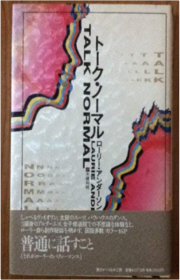
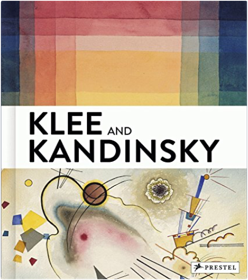
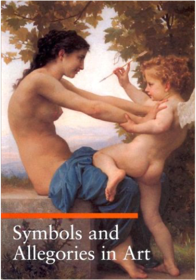
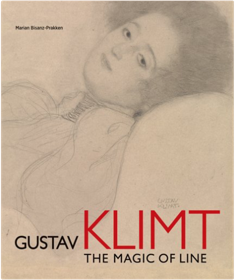

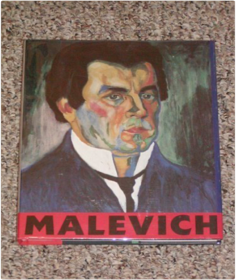
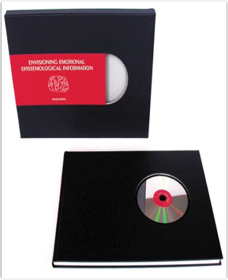

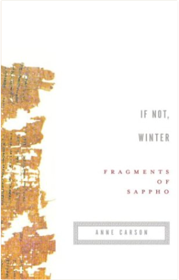
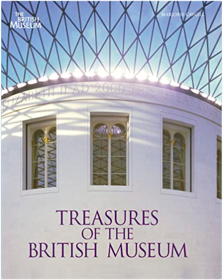
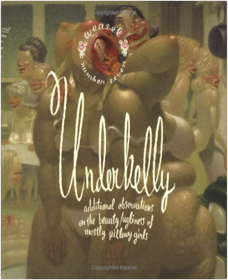
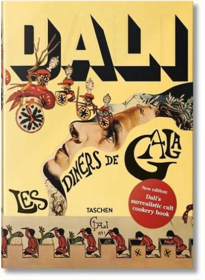
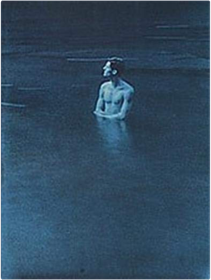
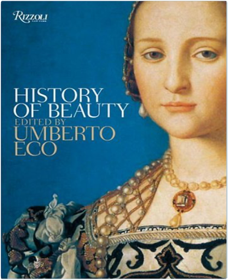
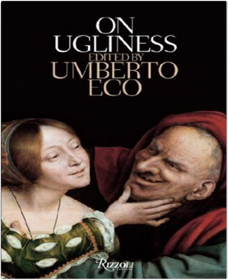
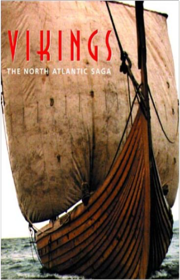
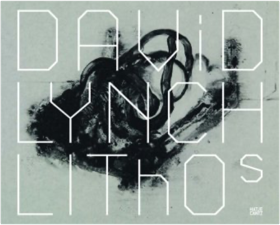
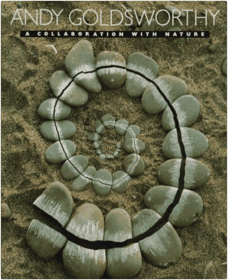
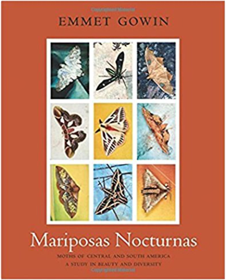
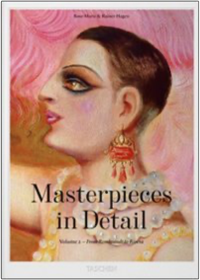
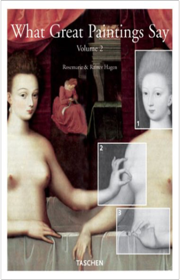
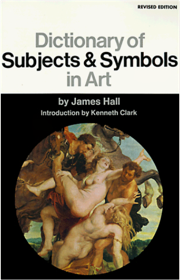
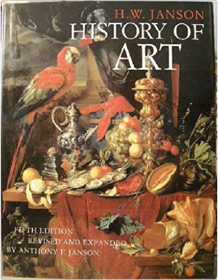
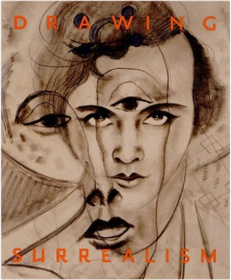
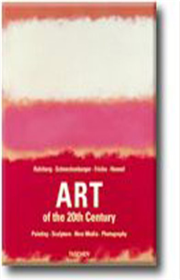
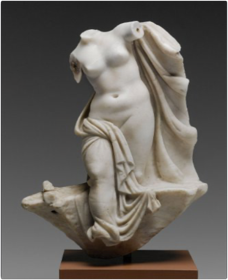
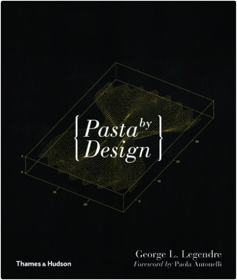
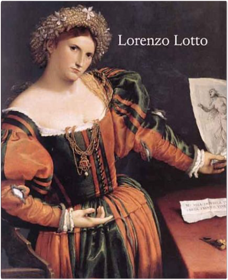
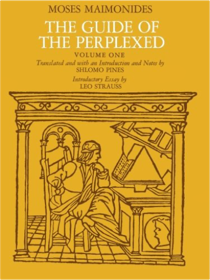
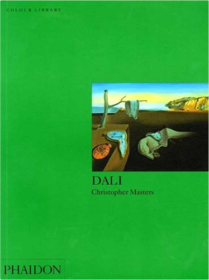
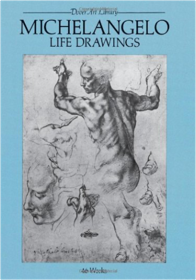
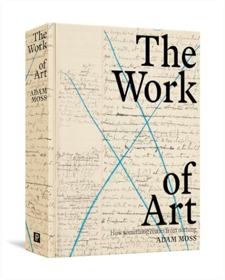
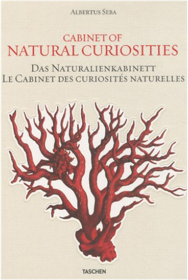
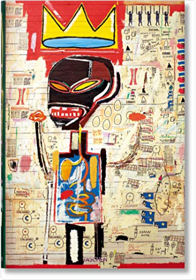
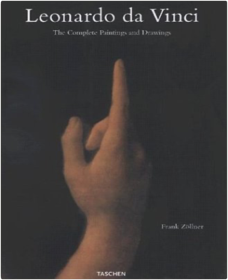

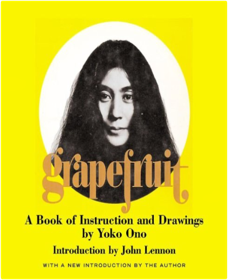
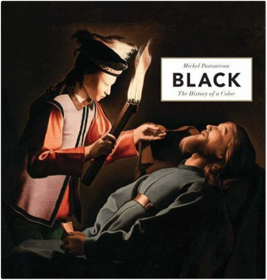
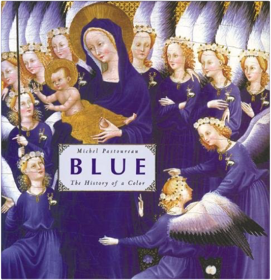
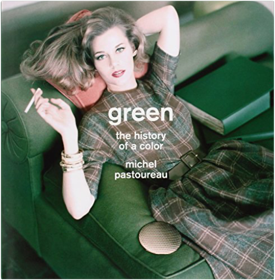
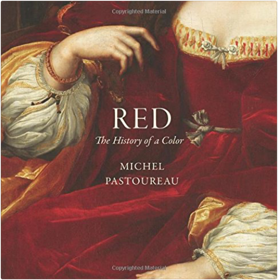
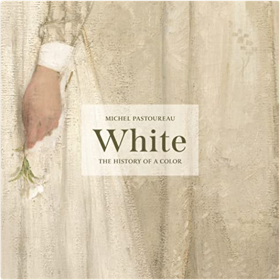
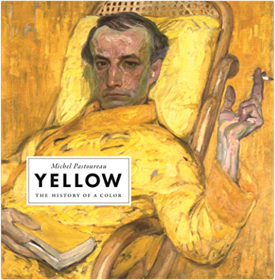
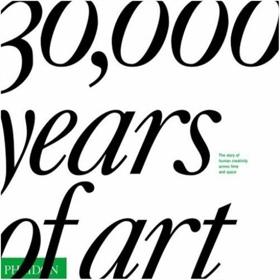
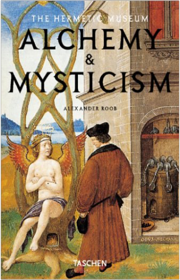
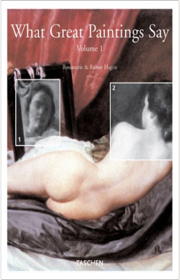
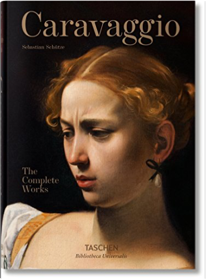
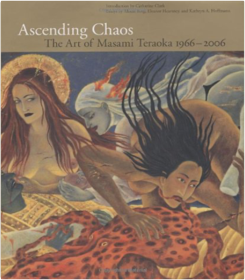
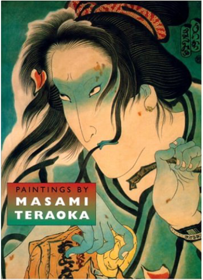
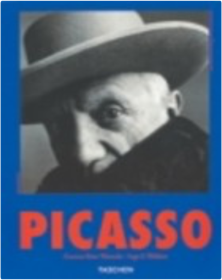




 Made with Delicious Library
Made with Delicious Library